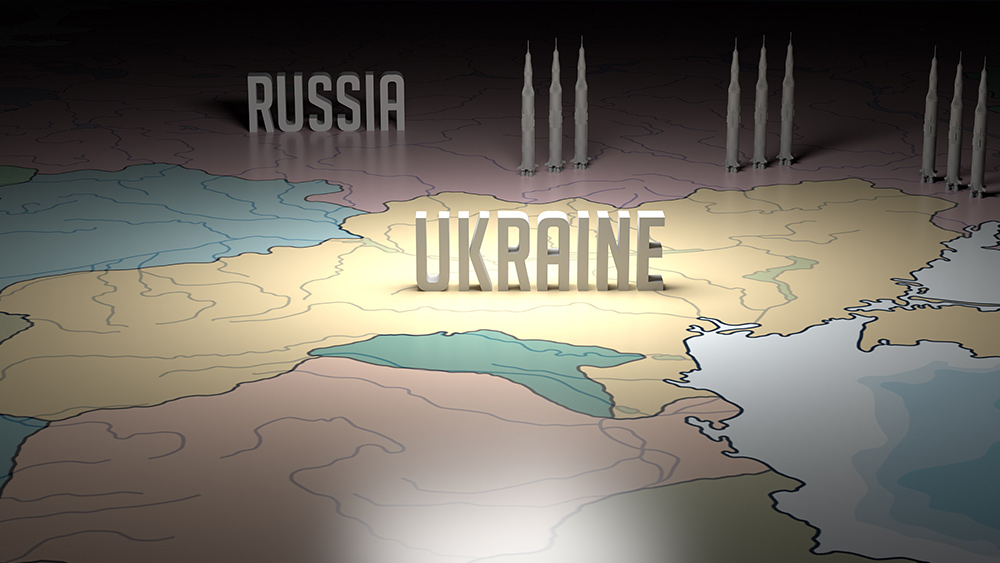Survival basics: How to build a bomb shelter before SHTF
06/02/2023 / By Zoey Sky

Aside from preparing bug-out bags and starting a stockpile of food and supplies, there are many ways to prepare before SHTF.
For example, you can learn how to build a bomb shelter to protect yourself and your family from a bomb blast or nuclear explosion.
Keep reading for tips on how to build a bomb shelter. (h/t to SurvivalLife.com)
Choose a safe location
Here are some important factors to keep in mind when choosing a location to build your bomb shelter:
Nearby structures
Choose a location far away from any flammable structures.
If a nuclear weapon detonates, it can cause systems to catch fire, and you don’t want your bomb shelter to be anywhere near a burning structure.
Avoid areas surrounded by vegetation and trees. Cutting their roots can harm the local geography.
Stability
Build your bomb shelter on solid ground.
Utility lines
When selecting a site for the shelter, avoid utility lines in your yard.
Water
Do not choose a downhill location or an area at the base of a steep slope.
Avoid large bodies of water to avoid flooding after SHTF.
Design the blueprint
After choosing a location, measure the area and design a blueprint. Having a blueprint will help you build a stable and adequate bomb shelter.
Here are three options on how to develop a bomb shelter plan:
- Hire an architect or a drafter.
- Research online.
- Sketch the design yourself.
The size of the bomb shelter depends on your preference. If you’re not sure about the dimensions, a basic bomb shelter measuring 10 x 10 x 10 feet can fit four people.
Think of a bomb shelter as a small house and maximize its space. When drafting the blueprint, plan for your safety, security, efficiency and comfort.
Prepare the materials
Use materials that are sturdy enough and will not fall to pieces after a bomb hits your area.
Here are some of the most common materials you can use for your shelter:
Bricks
Bricks are affordable, an excellent insulator and weatherproof.
Concrete
Concrete is relatively affordable and can withstand high loads.
Metal sheet
Metal sheets are solid and water-resistant, but they are more expensive compared to other options. You also need to add insulation if you choose this material.
Clear the construction site
Plant garden stakes into the ground to outline the perimeter of the shelter.
Use tools to dig up rocks and other waste in the chosen area. You can use axes and shovels, but this method is laborious and time-consuming.
To save time, borrow or rent a backhoe. This option may cost more, but it can significantly speed up the digging process. (Related: Survival skills: Tips for building an improvised fallout shelter.)
Clear the land around 10 feet beyond the perimeter of the bomb shelter so you have enough space to work with. Doing this also helps prevent the dirt from falling back into the ground.
Dig
The cut-and-cover method is used to build subways underground when you are about to excavate.
When using this technique, you must dig a trench, build trench support, create the bomb shelter, then cover it.
Before you start digging, keep in mind that this procedure is one of the most dangerous construction jobs. Practice trench excavation safety and install support systems.
The three most common types of protective systems are shielding, shoring and sloping.
Excavate deep enough to protect your family from disasters, blast waves and radiation, but not too deep that you could get trapped inside the bomb shelter.
Set aside the excavated soil.
Build a safe emergency exit
Build a safe emergency exit in your bomb shelter. Place the exit on the excavation side and opposite your main entryway.
This exit will ensure faster evacuation, and it will also provide additional ventilation for the shelter.
Dig a crawl space that is at least two feet wide and three-and-a-half feet deep below the soil’s surface. This crawl space must have a small trench at the end to connect it to the outside world.
Build a safe entrance
After creating the emergency exit, you must dig the main entryway.
Construct the main entrance the same way you created the emergency exit, but on the opposite end.
You can make the entrance wider so you can quickly enter the bomb shelter. Ensure that the entrance is below ground.
Bomb shelter doors can be hard to disguise because they need to be sturdy. If you want to hide the entrance, place the entrance to the shelter inside an old shed or in the back of a survival outhouse.
If you built the shelter underneath your home, you might be able to hide a trap door under the carpet or a large couch.
Construct the roof
Next, put wooden roofing poles above the trench.
These poles are long, uncut pieces of timber that you can buy at a home improvement store or lumberyard. The roofing poles must extend on each side of the trench to prevent bomb shelter collapse.
If your trench is five feet wide, your poles should be at least nine feet long.
Next, assemble the side of the bars by the side over your trench, minimizing the gaps.
Add a roof to the entryway
Pile some poles in front of the entrance to help prevent dirt from entering the shelter.
Place some poles between the trench and the edge of the entryway. Tie the wooden roofing poles together using some rope or wire.
Afterward, tie them to the poles you used as roof for the bomb shelter.
Protect the logs
Waterproof the wooden roofing poles by adding a layer of plastic material over them. Cover all gaps between the sticks to keep water and dirt from falling into the bomb shelter.
Use either a big tarp or several small tarps to cover the whole trench.
Cover the logs
After waterproofing the poles, cover them with an earth dome.
Move the excavated dirt and pile it up on top of the logs, shaping the dirt into a round mound. This will help make the bomb shelter roof more firm and solid.
Ensure that the dome is deep enough so you can be fully protected from radiation. You may also place another tarp over the dome, then pile more dirt on it to make its walls thicker.
Set up a ventilation pump
Place a ventilation pump near the emergency exit to keep the air in the bomb shelter clean. Get a pump with a manual or hand-operated option so you can still operate it in case of an emergency.
Place the pump filter on the floor, then run the pipe along with the crawl space. The tube should measure around 36 inches tall and 20 inches wide.
Install a toilet
Your shelter will also need a toilet. If you prefer a more efficient option, get a composting toilet.
You will also need to install another ventilation pump for the toilet. Install the toilet near the exit and far from the designated sleeping area.
Most bomb shelters typically do not have running water.
If you want clean, running water in the shelter, install tanks, filters and pipes. This option can be rather expensive and more elaborate than having a stockpile of water in the shelter or nearby.
Build or buy furniture
You don’t need oversized furniture in your shelter so you can choose options that will help maximize space.
For example, you can use a hammock as a bed. Loop strong ropes around the ceiling poles to hang the hammock.
Another option is to stack blankets or pack together pine needles for quick and cheap makeshift bedding.
Stock up on survival supplies
Lastly, you will need to build a food and water supply since you will be spending several weeks or months in your bomb shelter, such as after a nuclear attack,
If possible, get enough food and water for at least two weeks.
Choose dry, non-perishable foods that are easy to prepare, such as:
- Canned or dried meats, beans, soup, fruits and vegetables
- Dry and non-dairy milk
- Grains
- Nuts and seeds
- Peanut butter
- Grains
You may also want to get an alternative cooking method like a portable butane stove in your bomb shelter. You should also stockpile candles and a pot so you have another cooking method to use during a blackout.
Visit Survival.news for more tips on how to prepare before SHTF.
Watch the video below for tips on how to buy tools for building your bomb shelter at flea markets.
This video is from the Daily Videos channel on Brighteon.com.
More related stories:
Even regular people are now constructing bunkers due to fears of a nuclear war.
Prepping tips: How to survive with a limited water supply.
Fortitude Ranch: A vacation resort that turns into a survival community when SHTF.
Sources include:
Submit a correction >>
Tagged Under:
bomb shelter, bunkers, chaos, collapse, disaster, emergency preparedness, homesteading, how to, nuclear attack, nuclear survival, nuclear war, off grid, panic, preparedness, prepper, prepping, radiation, shelter, SHTF, survival, Survival Tips, survivalist
This article may contain statements that reflect the opinion of the author
RECENT NEWS & ARTICLES
COPYRIGHT © 2022 NuclearWar.news
All content posted on this site is protected under Free Speech. NuclearWar.news is not responsible for content written by contributing authors. The information on this site is provided for educational and entertainment purposes only. It is not intended as a substitute for professional advice of any kind. NuclearWar.news assumes no responsibility for the use or misuse of this material. All trademarks, registered trademarks and service marks mentioned on this site are the property of their respective owners.



















